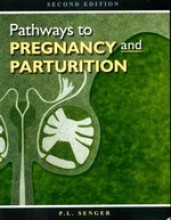Summary: Pathways To Pregnancy And Parturition | 9780965764827 | P L Senger
- This + 400k other summaries
- A unique study and practice tool
- Never study anything twice again
- Get the grades you hope for
- 100% sure, 100% understanding
Read the summary and the most important questions on Pathways to pregnancy and parturition | 9780965764827 | P.L. Senger.
-
1 Introduction to reproduction
This is a preview. There are 10 more flashcards available for chapter 1
Show more cards here -
What is the cortical reaction?
It prevents penetration by additional spermatozoa.
-
What is pronuclei formation?
It allows the male and female DNA to form a single nucleus.
-
What types of placenta's are there?
- Diffuese placenta
- Zonary placenta
- Discoid placenta
- Cotyledonary placenta -
What is the zondary placenta?
Have a band-like zone of chorionic villi -
How can you classify placentas on maternal and fetal blood streams?
- Epitheliochorial
- Endotheliochorial
- Hemochorial -
2 The organization and function of the female reproductive system
This is a preview. There are 15 more flashcards available for chapter 2
Show more cards here -
The female tract is a series of tubes. Each tube is organized in concentric layers called:
- Serosa (outer)
- Muscularis
- Submucosa
- Mucosa (inner)
-
What are the tubular components of the femal tract?
- Oviducts
- Uterus
- Cervix
- Vagina
-
What kind of structure arounds the reproductive tract?
The peritoneum that is in continuous with the broad ligament.
-
What are the components of the broad ligament?
- Mesovarium (houses the blood and lymphatic vessels and nerves that supply the ovary)
- Mesosalpinx (the surroinding of the oviduct)
- Mesometrium (supports the uterine horns and the body of the uterus)
-
Why are corpora albicantia white?
This is due to the increasing ratio of connective tissue to secretory tissue.
- Higher grades + faster learning
- Never study anything twice
- 100% sure, 100% understanding
Topics related to Summary: Pathways To Pregnancy And Parturition
-
The organization and function of the female reproductive system
-
The organization and funtion of the male reproductive system - testis
-
Reproductive cyclicity - Terminology and basic concepts
-
Reproductive cyclicity - The follicular phase
-
Reproductive cyclicity - The luteal phase
-
Reproductive behaviour
-
Early embryogenesis and maternal recognition of pregnancy
-
Reproductive behario
-
Extra: exam questions asked before
-
Overige info - Practicum
-
Insemination and fertilisation































